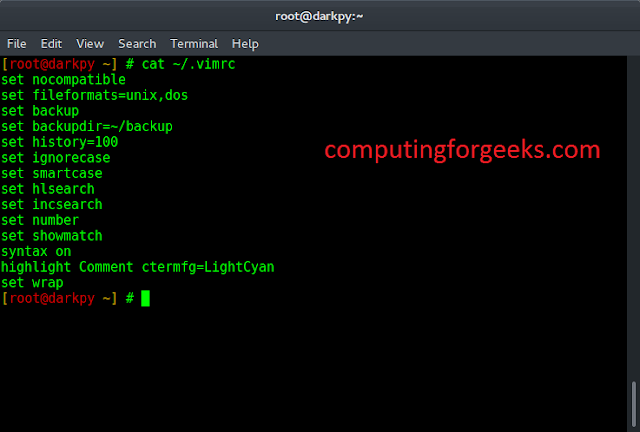Python is a great language for doing data analysis, primarily because of the fantastic ecosystem of data-centric Python packages. Pandas is one of those packages and makes importing and analyzing data much easier.
Let’s discuss all different ways of selecting multiple columns in a pandas DataFrame.
Method #1: Basic Method
Given a dictionary which contains Employee entity as keys and list of those entity as values.
# Import pandas packageimport pandas as pd # Define a dictionary containing employee datadata = {'Name':['Jai', 'Princi', 'Gaurav', 'Anuj'], 'Age':[27, 24, 22, 32], 'Address':['Delhi', 'Kanpur', 'Allahabad', 'Kannauj'], 'Qualification':['Msc', 'MA', 'MCA', 'Phd']} # Convert the dictionary into DataFrame df = pd.DataFrame(data) # select two columnsdf[['Name', 'Qualification']] |
Output:
Select Second to fourth column.
# Import pandas packageimport pandas as pd # Define a dictionary containing employee datadata = {'Name':['Jai', 'Princi', 'Gaurav', 'Anuj'], 'Age':[27, 24, 22, 32], 'Address':['Delhi', 'Kanpur', 'Allahabad', 'Kannauj'], 'Qualification':['Msc', 'MA', 'MCA', 'Phd']} # Convert the dictionary into DataFrame df = pd.DataFrame(data) # select all rows # and second to fourth columndf[df.columns[1:4]] |
Output:
Method #2: Using loc[]
Example 1: Select two columns
# Import pandas packageimport pandas as pd # Define a dictionary containing employee datadata = {'Name':['Jai', 'Princi', 'Gaurav', 'Anuj'], 'Age':[27, 24, 22, 32], 'Address':['Delhi', 'Kanpur', 'Allahabad', 'Kannauj'], 'Qualification':['Msc', 'MA', 'MCA', 'Phd']} # Convert the dictionary into DataFrame df = pd.DataFrame(data) # select three rows and two columnsdf.loc[1:3, ['Name', 'Qualification']] |
Output:
Example 2: Select one to another columns. In our case we select column name “Name” to “Address”.
# Import pandas packageimport pandas as pd # Define a dictionary containing employee datadata = {'Name':['Jai', 'Princi', 'Gaurav', 'Anuj'], 'Age':[27, 24, 22, 32], 'Address':['Delhi', 'Kanpur', 'Allahabad', 'Kannauj'], 'Qualification':['Msc', 'MA', 'MCA', 'Phd']} # Convert the dictionary into DataFrame df = pd.DataFrame(data) # select two rows and # column "name" to "Address"# Means total three columnsdf.loc[0:1, 'Name':'Address'] |
Output:
Example 3: First filtering rows and selecting columns by label format and then Select all columns.
# Import pandas packageimport pandas as pd # Define a dictionary containing employee datadata = {'Name':['Jai', 'Princi', 'Gaurav', 'Anuj'], 'Age':[27, 24, 22, 32], 'Address':['Delhi', 'Kanpur', 'Allahabad', 'Kannauj'], 'Qualification':['Msc', 'MA', 'MCA', 'Phd'] }# Convert the dictionary into DataFrame df = pd.DataFrame(data) # .loc DataFrame method# filtering rows and selecting columns by label# format# df.loc[rows, columns]# row 1, all columnsdf.loc[0, :] |
Output:
Method #3: Using iloc[]
Example 1: Select first two column.
# Import pandas packageimport pandas as pd # Define a dictionary containing employee datadata = {'Name':['Jai', 'Princi', 'Gaurav', 'Anuj'], 'Age':[27, 24, 22, 32], 'Address':['Delhi', 'Kanpur', 'Allahabad', 'Kannauj'], 'Qualification':['Msc', 'MA', 'MCA', 'Phd']} # Convert the dictionary into DataFrame df = pd.DataFrame(data) # Remember that Python does not# slice inclusive of the ending index.# select all rows # select first two columndf.iloc[:, 0:2] |
Output:
Example 2: Select all or some columns, one to another using .iloc.
# Import pandas packageimport pandas as pd # Define a dictionary containing employee datadata = {'Name':['Jai', 'Princi', 'Gaurav', 'Anuj'], 'Age':[27, 24, 22, 32], 'Address':['Delhi', 'Kanpur', 'Allahabad', 'Kannauj'], 'Qualification':['Msc', 'MA', 'MCA', 'Phd']} # Convert the dictionary into DataFrame df = pd.DataFrame(data) # iloc[row slicing, column slicing]df.iloc [0:2, 1:3] |
Output:
Method #4: Using .ix
Select all or some columns, one to another using .ix.
# Import pandas packageimport pandas as pd # Define a dictionary containing employee datadata = {'Name':['Jai', 'Princi', 'Gaurav', 'Anuj'], 'Age':[27, 24, 22, 32], 'Address':['Delhi', 'Kanpur', 'Allahabad', 'Kannauj'], 'Qualification':['Msc', 'MA', 'MCA', 'Phd']} # Convert the dictionary into DataFrame df = pd.DataFrame(data) # select all rows and 0 to 2 columns print(df.ix[:, 0:2]) |
Output:












